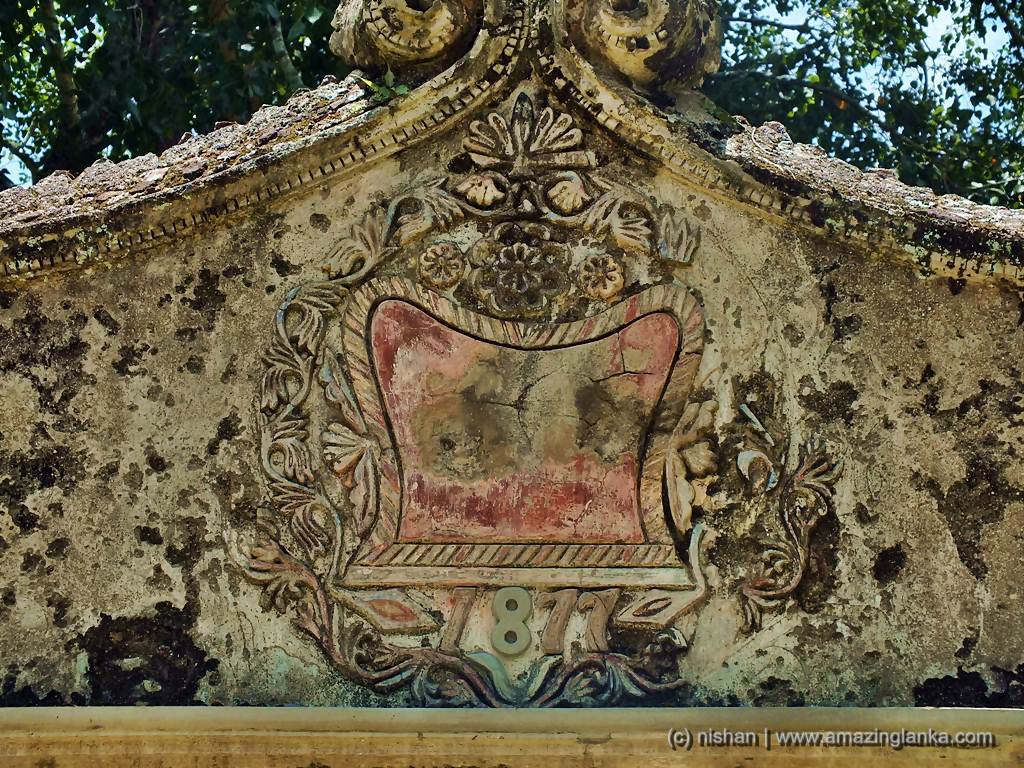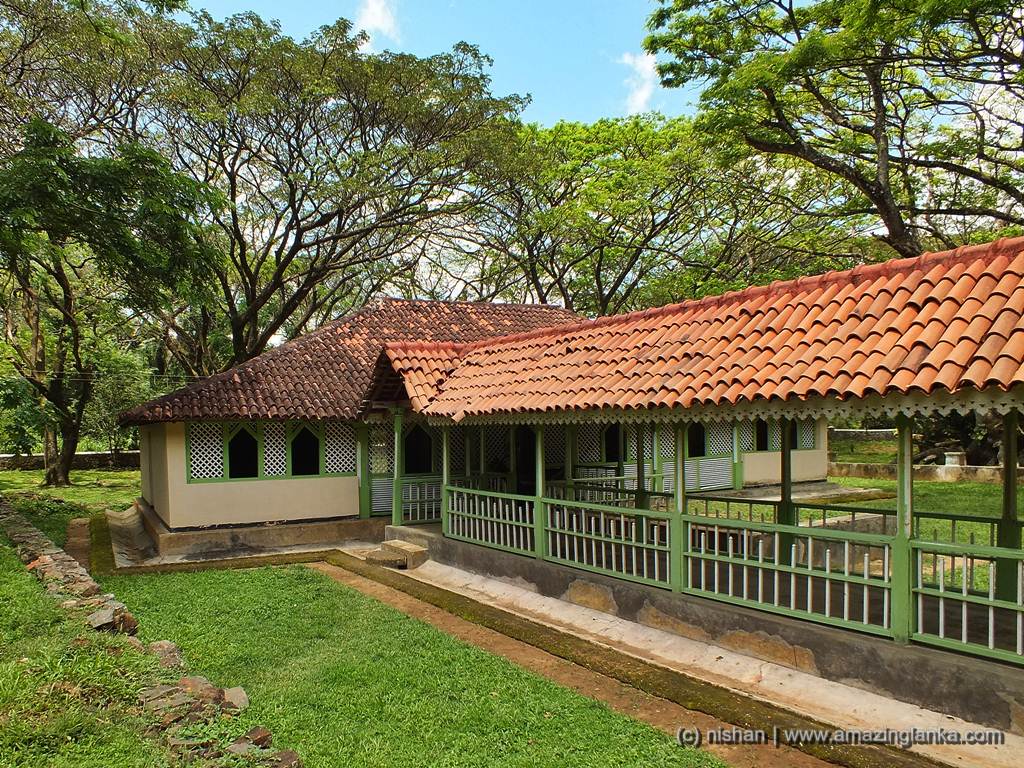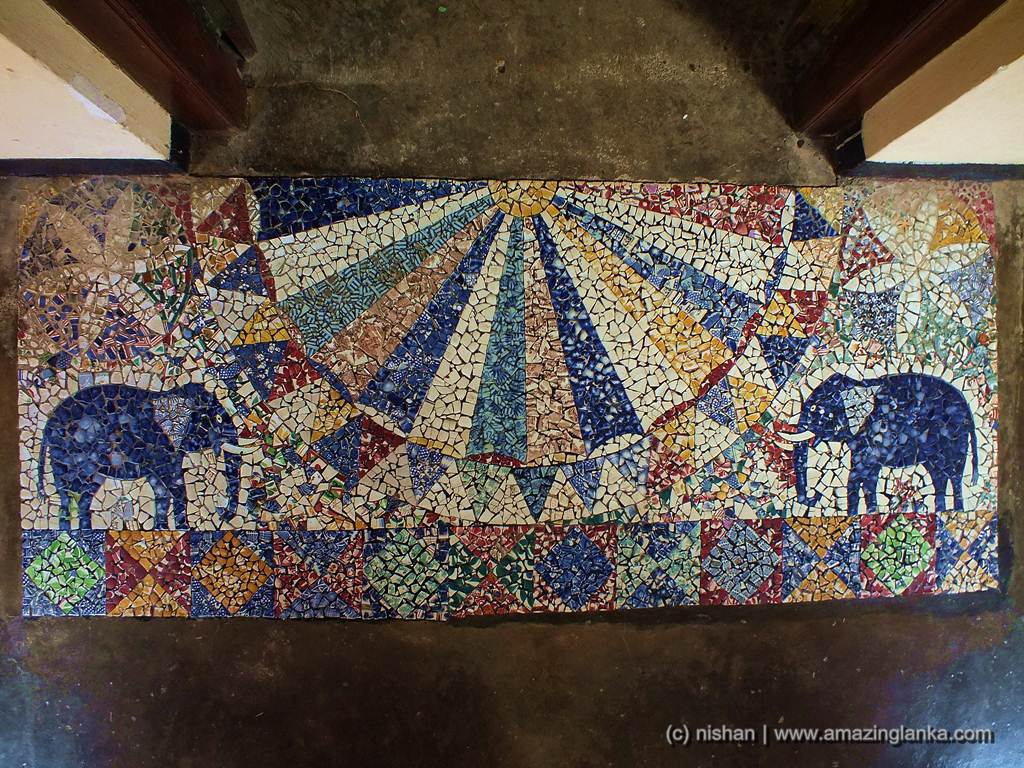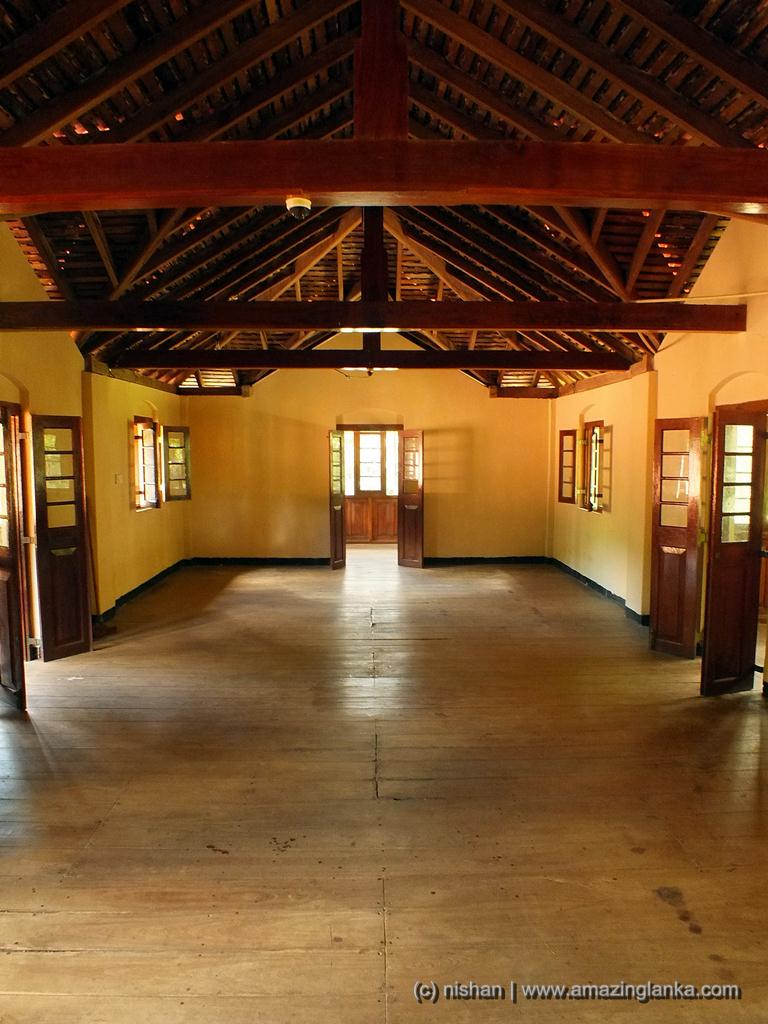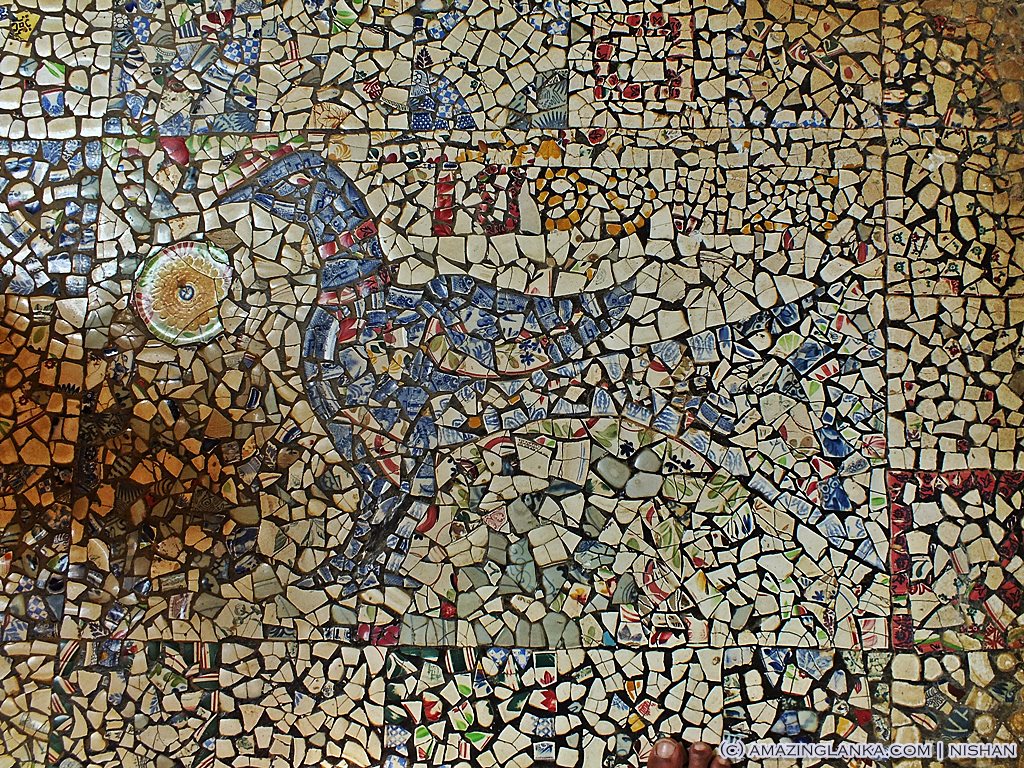– The Legacy of a Realm –

Often referred to as the Dark Prince of Ceylon, the Maduwanwela Disawe was a personality that defined an era. His influence with the colonial administrators of his time was such that they even bestowed on him the title of Sir James William. His ancestral home, the Maduwanwela Walawwa, is a reflection of the Disawe’s personality and an architectural icon of a bygone era.
The town of Kolonne lies between Embilipitiya and Suriyawewa. It is an area of tranquil beauty with paddy fields and tall trees that span out across the plains and provide much-needed shade. We visited Maduwanwela Walawwa on a bright, sunny day when the workers in the paddy field and the bustle of a farmer’s market made the village come alive in vivid colors and tones.
Built in the 1700s under the aegis of the then Maduwanwela clan, the Walawwa lies upon part of the 82,000 acre estate donated by two Sinhalese kings. The Panamure estate (nindagama) consisted of 54,000 acres and was gifted to Maduwanwela’s great grandfather by Kings Rajasinghe II for having brought him the head of a General who was under the Portuguese service.
He was said to have been shot across the swirls of his after-dinner cigar smoke. The Maduwanwela nindagama consisted of 24,000 acres and was a gift from Sri Wickrama Rajasinghe, the last king of Kandy in return for having presented him with a white Sambhur that had long eluded him.
As legend has it, the site upon which to build the Walawwa itself came about after a strange and unique event. An ancestor of Maduwanwela used to watch for game and one day, he watched amazed, as a hare and a jackal crossed paths and the hare gave chase to the jackal. The story of the hare’s unusual courage greatly influenced him, who considered it a victory ground (jaya bhumiya) and the ideal site for his mansion.
The Maduwanwela Wallauwwa during its heyday had 121 rooms and 21 inner gardens (mada midulas). Today, there are 40 rooms remaining and seven accompanying inner gardens. The building has been recognized as a historical and archaeological site by the government and its preservation has now fallen to the Archaeology Department.
The department is attempting to keep the remaining structure intact although the exterior of the building has suffered extensively due to the force of the elements over the centuries.
One of the most remarkable and awe-inspiring facets in the interior of the Walawwa are the paved floors which have been laid out in a mosaic style with chipped tiles bought over from the Netherlands. The colorful and intricate detailing in the mosaic leaves an impressive, lasting impression on any visitor. The tiles were laid in the year 1905 but are still in excellent condition.
The colorful and hypnotic patterns are occasionally broken by images of Queen Victoria and other such quirky colonial images as the sterling pound sign appearing on the tiles. This was just one of how the Disawe rebelled against his colonial masters. A staunch anti-colonialist throughout his life, the Disawe probably inserted the images of the colonial administrators within the tiles so that all visitors would walk over them – the ultimate insult to the foreign administrators.
The staircase and doorways are all constructed using tamarind, jack, and satinwood. Unique architectural features, specialized rooms for storage, rest, and recreation, and the indoor gardens that bring nature into the home make the Maduwanwela Walawwa a fascinating place to visit.
Many of the archways into the grounds are unusually low and this was apparently done so that visitors on horseback would have to dismount before entering. This also ensured that anyone entering the grounds, especially the taller-than-average foreigner, would be symbolically ‘bowing’ as they entered.
A testament to the Disawe’s religious fervour is a wide-branched bo-tree that stands right beside the entrance to the house. Also at the front of the Wallauwwa is a pirith-mandapaya, a permanent structure for hosting religious events and almsgivings.
The floor of this section is laid out in a tile mosaic and the top end has an inscription of “Good Luck, 1905” alongside a shoe horse design. The rich latticework and the imaginative floor designs are a beautiful blend of Western and local architecture.
On the surface of the tiling are to be found blank empty crevices where gold coins and precious gems were once embedded.
Besides the main Maduwanwela Walawwa complex is the courthouse where the Disawe tended to matters of state. Inside the structure, on the rear wall is a fading motto of the then-British administration. Beside the motto is found a small room which served as a holding cell. It’s said that the Disawe would on a day-to-day basis deal with issues regarding land, livestock, and even issues of matrimony, acting as both the judge and the jury.
Another fascinating feature of this estate is the extensive gardens. Three separate boundary walls segment the garden. In the middle lies a fountain. Most probably a majestic sight in its day, today the fountain lies broken and empty.
The Maduwanwela Walawwa has been home to six generations of the Maduwanwela realm. The current layout of the house dates back to the time of the last in the line of Maduwanwelas. Born in September 1844 Wickramasinghe Wijesundara Ekanayake Abayakoon Mudiyanse Ralahamilage Sir James William Maduwanwela Maha Disawe, was educated at St. Thomas College, Colombo, and then later on returned to the Walawwa to serve his people.
His real name was Molamure, namesake of a highly revered clan hailing from Ratnapura. He adopted his maternal family name of Maduwanwela upon inheriting the estate granted to his ancestors. Part of his inheritance was the role of native chief (rate mahattaya) one of 18 such chiefs in the neighboring vicinity.
The Disawe was married to Kalawane Kumarihami and bore a daughter and with her, the long line of Maduwanwelas was brought to a close. A grand portrait of the Black Prince of Sabaragamuwa still stands within a huge wooden frame made out of Kulumediri and tamarind wood. It adds grandeur to the Disawe who indeed lived the life of a prince.
Under the supervision of the Archaeological Department, in 1974 the Maduwanwela Walawwa was converted into a museum.
Also See
Map of Maduwanwela Walawwa
The map above also shows other places of interest within a approximately 20 km radius of the current site. Click on any of the markers and the info box to take you to information of these sites
Zoom out the map to see more surrounding locations using the mouse scroll wheel or map controls.
Travel Directions to Maduwanwela Walawwa
| Route from Colombo to Maduwanwela Walawwa | Route from Embilipitiya to Maduwanwela Walawwa |
| Through : Awissawella – Ratnapura – Madampe – Rakwana – Suriyakanda Distance : 167 km Travel time : 4 hours Driving directions : see on Google map | Through : Panamure Distance : 30 km Travel time : 40 minutes Driving directions : see on Google map |
0-09 m (81) 10-19 m (71) 20-29 m (42) 30-39 m (47) 40-49 m (23) 50-99 m (44) Ambalama (153) Ancient Anicuts (31) Ashtapala Bodhi (5) Attraction Article (3) Attractions (200) Beaches (7) Biosphere Reserves (3) Botanical Gardens (3) Bridges (34) Caving (7) Church (11) Cities (9) Destinations (16) Dethis Pala Bodhi (15) Devalaya (41) Flora and Fauna (44) Forts (49) Heritage (1606) Heritage Article (28) Historic Events (5) History (7) Hot Springs (9) Hydro Heritage (85) Irrigation Article (4) Islands (15) Kovil (25) Lighthouses (27) Memorials (28) Mile Posts (6) Mosque (3) Museums (8) National Parks (22) over 100 m (15) Pabbatha Vihara (10) Personalities (7) Pillar/Slab Inscriptions (35) Pre Historic Burial Sites (19) Prehistory (37) Ravana (12) Reservoirs (44) Ruins in Wilpattu (5) Ruins in Yala (24) Santuaries (7) Sluice Gates (11) Stone Bridges (18) Strict Nature Reserves (3) Survey Towers (13) Tampita Vihara (239) Travel (3) View Points (9) Walawwa (12) Waterfalls (375) Wildlife Article (24) Yathuru Pokuna (4)
Abhayagiri Monastery (19) Ampara District (191) Anuradhapura District (194) Badulla District (107) Batticaloa District (19) Colombo District (63) Galle District (58) Gampaha District (49) Hambantota District (99) Jaffna District (69) Kalutara District (47) Kandy District (178) Kegalle District (148) Kilinochchi District (11) Kingdom of Anuradhapura (80) Kingdom of Kandy (14) Kingdom of Polonnaruwa (55) Kurunegala District (150) Maha Vihara (14) Mannar District (47) Mannar Island (10) Matale District (72) Matara District (33) Mihintale (22) Monaragala District (72) Mullaitivu District (19) Nuwara Eliya District (109) Polonnaruwa District (107) Puttalam District (28) Ratnapura District (146) Trincomalee District (44) Vavuniya District (28) z Jaffna 1 (20) z Jaffna 2 (22) z Jaffna 3 (11)



 (22 votes, average: 3.27 out of 5)
(22 votes, average: 3.27 out of 5)
